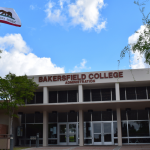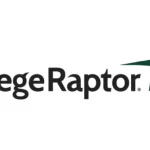In three recent posts, we’ve covered key topics related to increasing student engagement and outcomes through personalization, asset-based practices, and human-centered AI. Taken together, the overarching challenge of the moment is how to create a connected, personalized, yet still deeply human experience for our students. It can be helpful to reframe each challenge as an opportunity, which is what we propose below: a series of sub-challenges and their juxtaposing opportunities that help illustrate the whole-college, collaborative approach that is essential to increasing student success.
Challenge 1: Students don’t receive personalized guidance
Opportunity: Intelligent, Human-Centered AI (HCAI)
- Human-centered AI goes beyond mere automation; it learns and adapts to each student’s unique educational journey.
- HCAI must engage with students in an initial dialogue via a student preferred communication channel (chatbot, texting, etc.), asking targeted questions to understand their specific situation and preferences.
- AI then processes the information gathered to provide customized content, recommendations, and advice that align with the student’s needs, interests, and aspirations.
- HCAI must be designed to simulate a compassionate advisor, capable of guiding students through complex processes with a human touch.
Mercy College: Implements an AI-powered communications platform that learns about the user by asking questions and looking up information about the student before making assumptions and answering the user’s questions. Students now receive personalized information, such as their academic advisor’s name and contact information, account holds, and GPA. They don’t have to switch between platforms to get personalized information.
Challenge 2: Students must tell their story repeatedly, make unnecessary trips to campus, and waste time, leaving them feeling unheard.
Opportunity: Connected tech systems and customer service
- Tech solutions in today’s higher education landscape must be interoperable and connected.
- Thoughtfully designed, interoperable systems ensure that every interaction with a student is informed by their previous engagements across various departments in a secure, privacy protected way.
- A student’s journey can be tracked and documented along the way.
Northern Virginia Community College (NOVA) emphasizes customer service through all their student-facing offices. After implementing an AI-powered student communications platform that can speak directly to their SIS, they noticed that they had reduced unnecessary student visits to campus and saw a decrease in the flow of traffic. Not because the students weren’t engaged, but because they had already received the answers they were looking for!
Challenge 3: In their moments of greatest need, institutions are not always available
Opportunity: 24-7 Availability
- Deploy AI-powered student communication platforms to answer student questions at all hours, not just during operating hours
- Analyze traffic and timing of student requests to better calibrate staff capacity to student demand and peak times
Nevada State College leverages an AI-powered student communications platform to meet the needs of their rapidly growing student body. Especially during key moments like enrollment, admissions officers share that “we don’t lose [students] in this [enrollment] pipeline when we’re able to give them the answer directly and on their time schedule.” Advisors also remark that using this 24-7 communications platform ensures that students can always get started with answers to their questions, even on the weekends and at night.
Challenge 4: Students are confused by inconsistent, conflicting, and stressful messaging
Opportunity: Communication expectations and professional development
- Design protocols and standards for student-facing communication that are friendly, affirming, and lack jargon.
- Student-facing staff and technology systems should use the same messages and language to avoid confusion or incorrect information shared with students.
A community college student reported frustration that he found three conflicting financial aid deadlines on three separate institutional webpages. In response to this feedback and other observations, the college convened a working group to implement an AI-powered student communication platform, that would serve as the single source of information for student questions. The community college has now prevented future frustration because all its critical student information is housed in one place and the answers to student questions are consistent across all communication channels.
Challenge 5: Students get stuck talking to AI when they really need to speak to a human
Opportunity: Human-Centered AI:
- HCAI is trained to “handoff” the student to the appropriate staff member as soon as it is necessary.
- HCAI can quickly summarize the main takeaways from the AI interaction with the student to the staff member.
Florida Southwestern University (FSU) launched an AI–powered communications platform when their student-facing staff were overwhelmed by calls and inquiries from students after a natural disaster. Through this new tool, they freed up the capacity of their frontline staff by resolving 90% of the requests through HCAI, allowing their empathetic and highly trained staff to focus on the most complex cases.
Challenge 6: Once implementation ends, so does process improvement
Opportunity: Engage your Institutional Effectiveness teams
- Constantly evaluate and analyze the impact of existing processes, efforts to improve, and how students are interacting with the college.
- Treat every interaction with a student as not just a way to improve that individual student’s experience but also as a data point that can reveal more about the broader experiences of your student body.
St. Petersburg College shares the statistics and data points gathered through their AI-powered student communication platform with their leadership team and other related stakeholder groups on campus. Reviewing these statistics, as well as the overall chat history, helps identify new or emerging pain points or challenges students are facing in real time. They don’t have to wait for an end-of-semester survey to get a pulse on what is or isn’t working with their students.
Want to learn how HCAI can help you meet individual student needs at scale? Explore the possibilities with our team today! Talk to us here.















